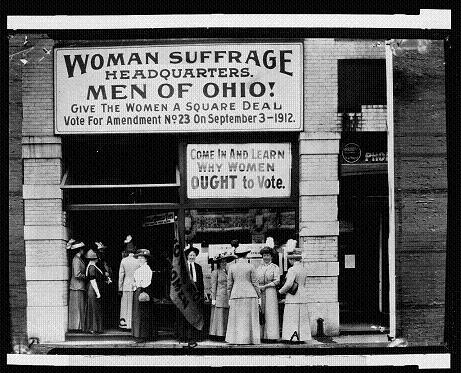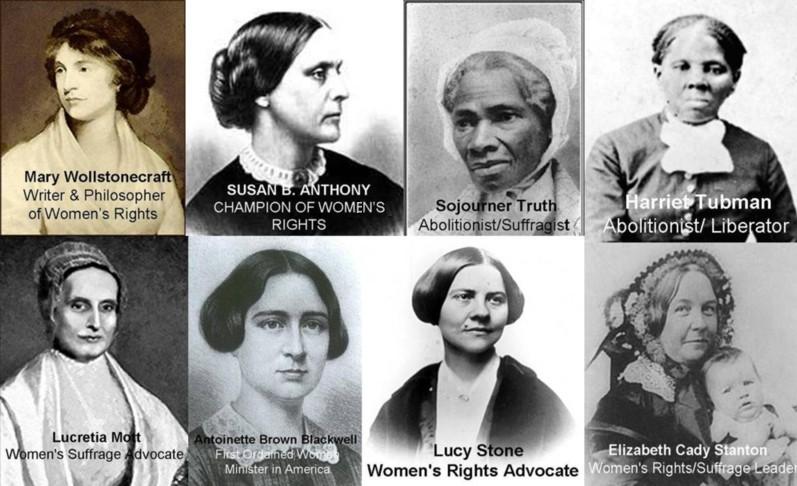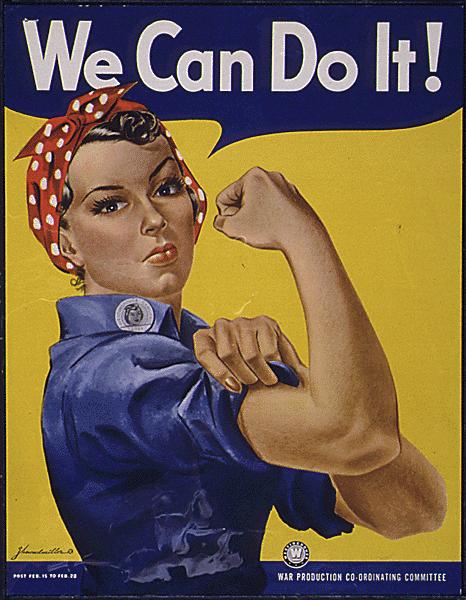<< Learning Center
Media Accessibility Information, Guidelines and Research
Women's History Month: Writing Women Back into History
By Kelly Gorski
History looks different when the contributions of women are included."
The National Women's History Project

Although women have been shaping human history since the dawn of civilization, the concept of Women's History Month has its roots firmly implanted in the date March 8, 1857, when women from New York City factories protested untenable working conditions. As recently as the 1970s, the influence of women in history was a virtually nonexistent topic in public school curricula or even an element within general public consciousness and discourse. To address this situation, the Education Task Force of the Sonoma County (California) Commission on the Status of Women recognized "Women's History Week" during one week in March in 1978. In 1981 Sen. Orrin Hatch (R-UT) and Rep. Barbara Mikulski (D-MD) cosponsored a joint Congressional resolution proclaiming a national Women's History Week. In 1987 Congress expanded the celebration to a month, and March was declared Women's History Month.
Did You Know?
Sometimes questions are more important than answers."
Nancy Willard
According to the U.S. Census Bureau, American Community Survey:
- Thirty-seven percent of women sixteen or older are employed in managerial, professional, and other related positions, compared with thirty-one percent of men.
- Revenue for women-owned businesses in 2002 reached more than $939 billion—fifteen percent higher than 1997.
- There were 116,985 women-owned firms with receipts of $1 million or more.
- The median annual earning of women sixteen or older who worked year-round was $32,168 in 2005.
- Women earned seventy-seven cents for every dollar earned by men in similar career positions.
The ever-changing socio-political climate of the sixties caused women to question their invisibility in traditional American history texts, public school curricula, and even social discourse. During the sixties, the aspirations of and the opportunities for women were broadened and produced a growing number of female actors, athletes, artists, scientists, educators, and historians.

Carroll Smith-Rosenberg, one of the early women's historians, stated, "[W]ithout question, our first inspiration was political. Aroused by feminist charges of economic and political discrimination . . . we turned to our history to trace the origins of women's second-class status."
Throughout history, women have made significant contributions to every discipline and all other areas of life. Women have influenced our culture and the progression of literature, photography, music, math, science, research, and so much more. The originality, beauty, endurance, imagination, and multiple dimensions of women's lives have shaped our collective history, and all of this must be written back into it.
How Can We Teach It?
It was we, the people; not we, the white male citizens; nor yet we, the male citizens; but we, the whole people, who formed the Union."
Susan B. Anthony
There are several things you can do with your students in the classroom to celebrate Women's History Month and the role deaf women played in particular:
- Have a motivational speaker who is involved with women's rights and privileges come speak to your classroom or to your school.
- Ask your students and other teachers to have their students participate with your class in writing essays or poems related to Women's History Month.
- Ask your students to nominate their favorite historical or contemporary female figure and explain what made them choose those particular people.
- Write a press release about your observance of Women's History Month.
- Ask your students to think of a clever angle to capture the media's attention.
- Delve into history and explore the impacts women have made, like Susan B. Anthony, Joan of Arc, Clara Barton, Cleopatra, and Sojourner Truth; and then review modern women and their influences, such as Maya Angelou, the late Benazir Bhutto, Hillary Clinton, Julia Gillard, Nancy Pelosi, Condoleezza Rice, Gloria Steinman, Margaret Thatcher, and Naomi Wolf.
- Focus specifically on women who are deaf who overcame various obstacles unique to deaf women and succeeded: Kitty O'Neal, the world's fastest woman; Claudia Gordon, a successful lawyer; Marlee Matlin, a brilliant actress; Heather Whitestone, the 1995 Miss America; and Henrietta Swan Leavitt, a scientist.
- Have your students watch any of the DCMP titles listed below; these are sure to incite some healthy discussion.
The DCMP
A woman is like a tea bag—only in hot water do you realize how strong she is."
Eleanor Roosevelt

The Described and Captioned Media Program (DCMP) has titles in its collection that promote recognition of women's historical accomplishments, and education regarding how women can further themselves through research, education, and advocacy.
The series Women First and Foremost: Volumes One-Three tells the story of courageous American women, their place in history, and selected individual accomplishments. Volume one includes women's impact on medicine, literature, and abolition.
The series Career Options for Women profiles many women in various career fields, and remarks from coworkers and supervisors provide additional layers to the description of all the jobs that are highlighted.
The title Bloomers to Ballot details how women had to go against the church, their fathers and husbands, and society's expectations to gain the right to vote. The women's suffrage movement in Wyoming and Colorado during 1870-1896 is emphasized.
You may also want your class to read Harry Lang's article Finding Deaf Herstory and History: Resources for the Classroom, which is about Edmund Booth, a deaf forty-niner, and Laura Redden Searing, a deaf poet and Civil War journalist. Lang, a professor at the National Technical Institute for the Deaf, concludes with an encouragement to deaf and hearing scholars to continue the development of deaf studies books and resources.
Making a Difference for Deaf Women
The young women of today—free to study, to speak, to write, to choose their occupation —should remember that every inch of this freedom was bought for them at a great price... the debt that each generation owes to the past, it must pay to the future."
Abigail Scott Dunaway
Women have long championed equal pay for equal work, affordable child care, the fight against the undervaluing of women who take on unpaid careers such as being a stay-at-home parent or caregiver for aging relatives, and the underreporting of domestic violence and sexual assault for both men and women. However, for all women have done throughout history, one often overlooked minority is that of deaf women.
Women's History Month draws attention to the women who have fought for the rights we have today, and simultaneously highlights the ongoing struggles for women's equality. While this month was originally meant to bring the world's attention to women, their accomplishments and plights worldwide, it has now also become a venue to celebrate the accomplishments that women have made and the positive changes that have come about in modern times. However, much is still left to be done.
Many organizations have taken on the monumental tasks of making our world a better place, and some choose to focus on women and women's role in society. Check out these two great organizations to learn more about how you can support deaf women by helping these organizations—and maybe getting involved yourself:
Deaf Women United (DWU): Deaf Women United is committed to continuing a community of support of Deaf women from all walks of life. You can play a significant role in assuring the success of our mission to promote the lives of Deaf women through empowerment, enrichment, and networking.
Abused Deaf Women's Advocacy Services (ADWAS): ADWAS is committed to providing services to Deaf and Deaf-Blind victims of sexual assault and/or domestic violence. The mission of ADWAS is a belief that violence is a learned behavior and it should not be tolerated.
Conclusion
March is the time set aside for specifically celebrating women in history, their achievements, influences, and dedication to both hearing and deaf women across America, but we should celebrate our collective history every day! Everyone needs to be involved, and accessible media from the DCMP can help you learn and celebrate year-round.
About the Author
Kelly Gorski is former communications editor for the Described and Captioned Media Program.
Tags:
Please take a moment to rate this Learning Center resource by answering three short questions.
